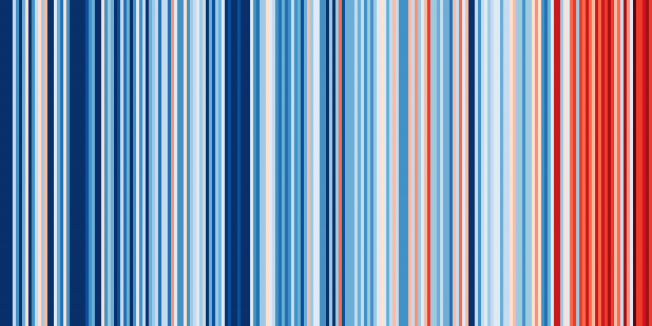Influence of the Eurasian snow on the negative North Atlantic Oscillation in subseasonal forecasts of the cold winter 2009/2010
Abstract:
© 2015, The Author(s). The winter 2009/2010 was remarkably cold and snowy over North America and across Eurasia, from Europe to the Far East, coinciding with a pronounced negative phase of the North Atlantic Oscillation (NAO). While previous studies have investigated the origin and persistence of this anomalously negative NAO phase, we have re-assessed the role that the Eurasian snowpack could have played in contributing to its maintenance. Many observational and model studies have indicated that the autumn Eurasian snow cover influences circulation patterns over high northern latitudes. To investigate that role, we have performed a suite of forecasts with the coupled ocean–atmosphere ensemble prediction system from the European Centre for Medium-Range Weather Forecasts. Pairs of 2-month ensemble forecasts with either realistic or else randomized snow initial conditions are used to demonstrate how an anomalously thick snowpack leads to an initial cooling over the continental land masses of Eurasia and, within 2 weeks, to the anomalies that are characteristic of a negative NAO. It is also associated with enhanced vertical wave propagation into the stratosphere and deceleration of the polar night jet. The latter then exerts a downward influence into the troposphere maximizing in the North Atlantic region, which establishes itself within 2 weeks. We compare the forecasted NAO index in our simulations with those from several operational forecasts of the winter 2009/2010 made at the ECWMF, and highlight the importance of relatively high horizontal resolution.Evaluating uncertainty in estimates of soil moisture memory with a reverse ensemble approach
Abstract:
Soil moisture memory is a key component of seasonal predictability. However, uncertainty in current memory estimates is not clear and it is not obvious to what extent these are dependent on model uncertainties. To address this question, we perform a global sensitivity analysis of memory to key hydraulic parameters, using an uncoupled version of the H-TESSEL land surface model. Results show significant dependency of estimates of memory and its uncertainty on these parameters, suggesting that operational seasonal forecasting models using deterministic hydraulic parameter values are likely to display a narrower range of memory than exists in reality. Explicitly incorporating hydraulic parameter uncertainty into models may then give improvements in forecast skill and reliability, as has been shown elsewhere in the literature. Our results also show significant differences with previous estimates of memory uncertainty, warning against placing too much confidence in a single quantification of uncertainty.Calibrating Climate Change Time-Slice Projections with Estimates of Seasonal Forecast Reliability
Oceanic stochastic parametrizations in a seasonal forecast system
Abstract:
Stochastic parametrization provides a methodology for representing model uncertainty in ensemble forecasts. Here we study the impact of three existing stochastic parametrizations in the ocean component of a coupled model, on forecast reliability over seasonal timescales. The relative impacts of these schemes upon the ocean mean state and ensemble spread are analyzed. The oceanic variability induced by the atmospheric forcing of the coupled system is, in most regions, the major source of ensemble spread. The largest impact on spread and bias came from the Stochastically Perturbed Parametrization Tendency (SPPT) scheme - which has proven particularly effective in the atmosphere. The key regions affected are eddy-active regions, namely the western boundary currents and the Southern Ocean where ensemble spread is increased. However, unlike its impact in the atmosphere, SPPT in the ocean did not result in a significant decrease in forecast error. Whilst there are good grounds for implementing stochastic schemes in ocean models, our results suggest that they will have to be more sophisticated. Some suggestions for next-generation stochastic schemes are made.Impact of springtime Himalayan-Tibetan Plateau snowpack on the onset of the Indian summer monsoon in coupled seasonal forecasts
Abstract:
The springtime snowpack over the Himalayan-Tibetan Plateau (HTP) region and Eurasia has long been suggested to be an influential factor on the onset of the Indian summer monsoon. To assess the impact of realistic initialization of springtime snow over HTP on the onset of the Indian summer monsoon, we examine a suite of coupled ocean-atmosphere 4-month ensemble reforecasts made at the European Centre for Medium-Range Weather Forecasts (ECMWF), using their Seasonal Forecasting System 4. The reforecasts were initialized on 1 April every year for the period 1981-2010. In these seasonal reforecasts, the snow is initialized “realistically” with ERA-Interim/Land Reanalysis. In addition, we carried out an additional set of forecasts, identical in all aspects except that initial conditions for snow-related land surface variables over the HTP region are randomized.
We show that high snow depth over HTP influences the meridional tropospheric temperature gradient reversal that marks the monsoon onset. Composite difference based on a normalized HTP snow index reveal that, in high snow years, (i) the onset is delayed by about 8 days, and (ii) negative precipitation anomalies and warm surface conditions prevail over India. We show that about half of this delay can be attributed to the realistic initialization of snow over the HTP region. We further demonstrate that high April snow depths over HTP are not uniquely influenced by El Nino-Southern Oscillation, the Indian Ocean Dipole or the North Atlantic Oscillation.



